Former British army commander said Ukraine is at "serious risk" of its defense line collapsing and being defeated by Russia's multi-directional advance.
Ukraine is not yet at that point, but its military is severely depleted of ammunition, troops and air defenses. A massive Ukrainian counteroffensive last year failed to dislodge Russian forces from areas under its control.
The Russian military is preparing for a summer offensive. The shape of the campaign is clear, Barrons said. “We are seeing Russian forces pushing forward on the front lines, using a five-to-one advantage in artillery, ammunition, and manpower, and increasingly using new weapons,” he said.
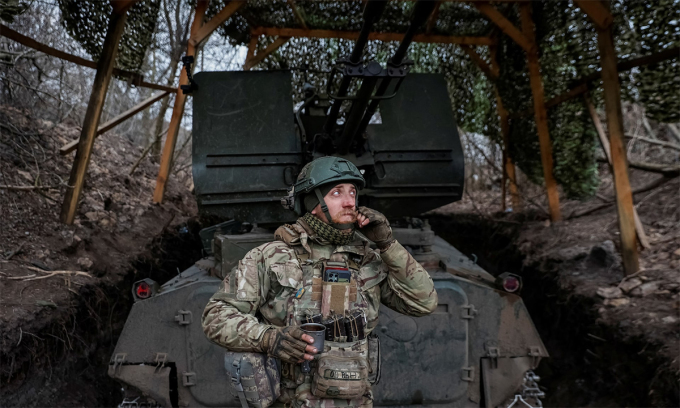
Ukrainian soldiers in the area near Bakhmut on March 6. Photo: Reuters
Among Russia’s new weapons are FAB glide bombs of various sizes, which are conventional Soviet-era bombs equipped with guidance fins and navigation systems. FAB models can weigh from 250 kg to 1.5 tons and are destroying Ukraine’s defense system.
“Sometime in the summer, we will see a large-scale Russian offensive that is more than just small incursions to break through the Ukrainian defenses,” Barrons predicted. “Russian forces will be able to break through and overrun areas where Ukraine cannot stop them.”
Last year, Russia knew exactly where Ukraine was likely to strike back, including from Zaporizhzhia south to the Azov coast. It planned its defenses accordingly and successfully stopped Ukraine’s advance. The situation is completely different now, with Ukraine unable to predict where Russia will strike next.
“One of the challenges Ukraine faces is that Russia can choose where to deploy its forces,” said Jack Watling, a land warfare expert at the Royal United Services Institute (RUSI) in the UK. “The front line is long and Ukraine has to defend the whole thing.”
However, due to a lack of forces, Ukraine cannot deploy troops across the entire front line. Mr. Watling predicts that Ukraine will lose more territory in the next Russian offensive. "The question is how much and which cities will be affected," he said.
The Russian General Staff may not have decided on the main direction of the advance. Experts say Kharkov, a province in northeastern Ukraine, is certainly a key target for Russia.
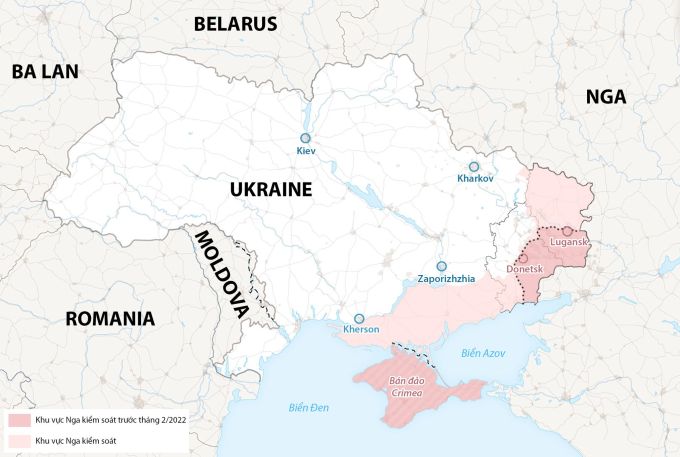
The Russia-Ukraine war situation. Graphics: WP
Russia has been attacking Kharkiv on a daily basis recently. Ukrainian air defenses in Kharkiv are not capable of stopping the coordinated attack tactics of UAVs, cruise missiles and ballistic missiles aimed at the area.
"In my opinion, this year's Russian offensive will target targets outside the Donbass region. They will have their eyes on the big target of the city of Kharkov, the capital of the province of the same name, located about 29 km from the border," Mr. Barrons predicted.
Ukraine could still survive if Kharkov falls, but it would be a catastrophic blow to the country's morale and economy , British experts warn.
Fighting in the Donbass region, which includes Donetsk and Lugansk provinces, has been ongoing since 2014 when pro-Russian separatists seized power there. Russia annexed Lugansk, Donetsk, Zaporizhzhia and Kherson in October 2022.
The Donbas region has been the scene of much of the ground fighting over the past 18 months. Most controversially, Ukraine poured huge resources into defending Bakhmut and Avdeevka, two cities that it later lost to Russia. The loss of these two cities cost Ukraine a significant number of its best fighting troops.
Ukraine claims that the defensive operation in Bakhmut and Avdeevka caused high casualties for Russian forces. However, Russia has more troops to continue the operation, while Ukraine does not.
General Christopher Cavoli, head of the US military's European Command, warned on April 10 that unless the country transfers more weapons and ammunition, Ukraine will be outgunned by Russia 10-to-1 on the battlefield.
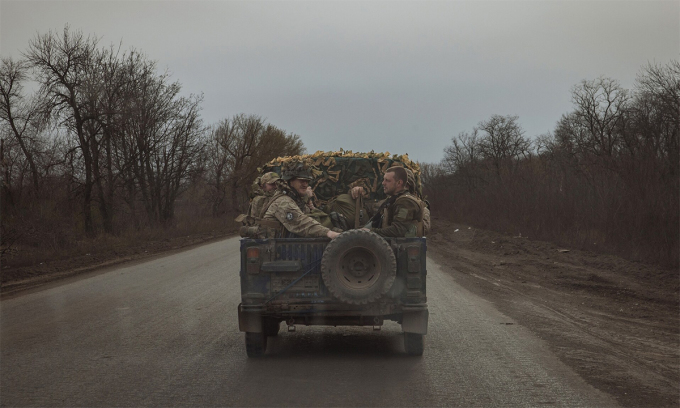
Ukrainian soldiers on a road near the city of Chasov Yar on March 25. Photo: AFP
According to British experts, the Russian military may be inferior in tactics, leadership and equipment to Ukraine, but it has an advantage in numbers and especially artillery. This advantage is so great that if Russia has no other objective, its default option is to continue pushing Ukraine westward, taking control of it village by village.
The city of Zaporizhzhia is another major Russian target, home to 700,000 people before the war and close to the front line. Zaporizhzhia is the capital of the region of the same name, which Russia annexed but Ukraine still controls.
The formidable defenses that Russia has built south of Zaporizhzhia could complicate any advance in this direction, British experts say. Russia could dismantle parts of the line, but this could expose its preparations.
Russia's strategic goal this year, however, may not be to seize more territory, but simply to break Ukraine's fighting spirit and convince the West that the country is doomed to lose.
“The Russian goal is to try to create a sense of hopelessness,” Mr. Watling said. “This Russian attack will not end the conflict, regardless of the situation on both sides.”
General Barrons also doubts Russia's ability to take advantage of the situation to launch a decisive blow while Ukraine faces a dire situation.
“The most likely outcome is that Russia will make gains but not make a breakthrough,” Barrons said. “They don’t have forces big enough or good enough to push all the way to the Dnieper River, but the tide of the war will be in Russia’s favor.”
Nguyen Tien (According to BBC, AFP, Reuters )
Source link



![[Infographic] Notable numbers after 3 months of "reorganizing the country"](https://vphoto.vietnam.vn/thumb/1200x675/vietnam/resource/IMAGE/2025/10/4/ce8bb72c722348e09e942d04f0dd9729)
![[Photo] Students of Binh Minh Primary School enjoy the full moon festival, receiving the joys of childhood](https://vphoto.vietnam.vn/thumb/1200x675/vietnam/resource/IMAGE/2025/10/3/8cf8abef22fe4471be400a818912cb85)






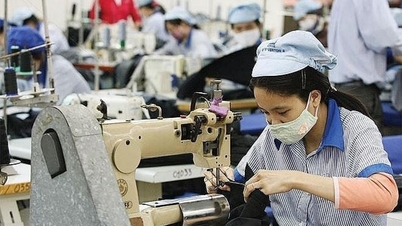



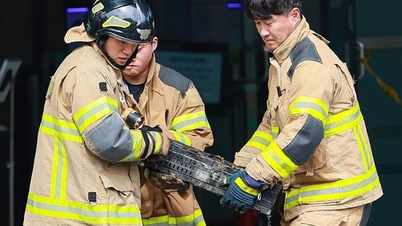













![[Photo] Prime Minister Pham Minh Chinh chairs meeting to deploy overcoming consequences of storm No. 10](https://vphoto.vietnam.vn/thumb/1200x675/vietnam/resource/IMAGE/2025/10/3/544f420dcc844463898fcbef46247d16)




































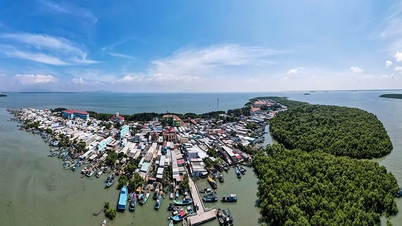
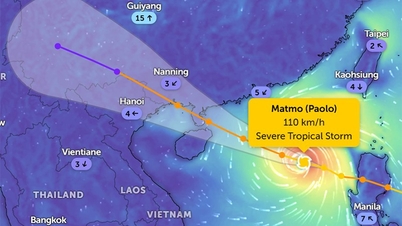


![[Infographic] Notable numbers after 3 months of "reorganizing the country"](https://vphoto.vietnam.vn/thumb/402x226/vietnam/resource/IMAGE/2025/10/4/ce8bb72c722348e09e942d04f0dd9729)
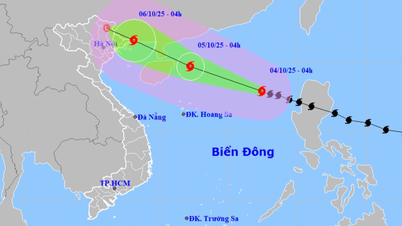










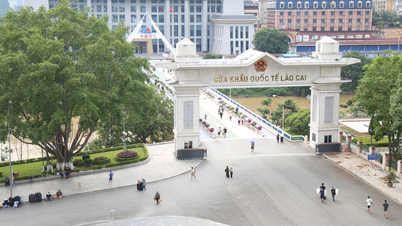




















Comment (0)